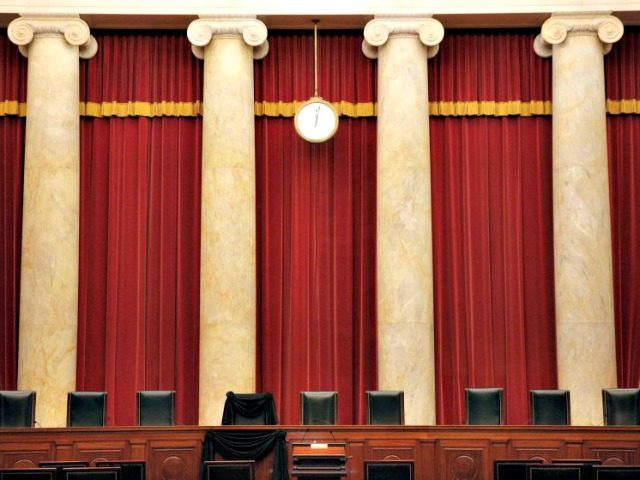Sen. James Lankford (R-OK) has a proposal to change to how the Senate confirms presidential nominees for federal judgeships and the executive branch. It would break the gridlock that has sparked a nationwide campaign to staff the bench and federal government.
A record number of President Donald Trump’s nominations to fill top positions in the federal government—including key positions such as those in the State Department, Defense Department, Treasury Department, and Justice Department—are being slow-walked in the U.S. Senate, preventing the three million employees of the federal government from carrying out vital parts of the president’s agenda.
Article II of the Constitution requires that all federal judges and high-ranking administration officials are nominated by the president, and then must be confirmed by the Senate.
By mid-July in each of the four previous administrations (Bush 41, Clinton, Bush 43, and Obama), the average number of Senate-confirmed appointments was 190. For President Trump, that number was 50.
“But the minority can force the full 30 hours of debate time provided within the rules, which they have repeatedly demanded,” Lankford explains in a recent Wall Street Journal op-ed. “At the current rate, it will take 11 years to fill the executive branch.”
When cloture is invoked to stop a filibuster, Senate rules technically allow another 30 hours of debate before a final vote. Senators typically give back most of that time because the battle is lost. Instead of following that convention, Senate Democrats are using all 30 hours before allowing the Senate to vote and move on to the next item of business.
Many commentators thought that this form of obstruction would end with the “nuclear option.” Democrats in 2013 reinterpreted the Senate’s filibuster rule (Rule XXII) not to apply to any presidential nominations to the executive or judicial branches, with the Supreme Court being the sole exception. Senate Republicans abolished that extension earlier this year, resulting in the confirmation of Justice Neil Gorsuch.
The situation is just as bad in the federal judiciary, where only a handful of 140 judicial vacancies have been filled with President Trump’s nominees. This has led to the Judicial Crisis Network launching a nationwide campaign with grassroots groups using the handle #GridlockReform, pushing senators to bring nominees to the Senate floor for an up or down vote.
Lankford cites Judge David Nye as an example of this obstruction. President Barack Obama originally nominated Nye for a federal judgeship. Nye did not make it through the confirmation process before Obama left office, so President Trump re-nominated him as a gesture of bipartisanship to Senate Democrats.
Every Senate Democrat finally joined all the Republicans to confirm Nye by a unanimous vote of 100-0, but only after consuming all 30 hours of debate.
The solution? According to Lankford, “First, we should reduce floor debate time for executive nominees from 30 hours to eight or less. The Senate could debate and vote on five or more nominees a week, instead of just one or two.”
Lankford notes that Sen. Harry Reid (D-NV) agreed to this arrangement when he was majority leader. “It worked then, and it would work now,” he declares.
“Second, we should lower the vote threshold on the ‘motion to proceed,’ which begins legislative debate and amendment consideration, from 60 votes to 51,” Lankford continued, explaining that almost every bill in the Senate requires two 60-vote approvals, one to begin debate and one to end it. Requiring only 51 votes to start debate would still protect minority-party rights by requiring 60 to move to an up-or-down vote, but move the process along.
Such a change would also ensure that senators could no longer duck a tough issue by not letting it come up for debate.
Coupled with Senate Judiciary Committee Chuck Grassley’s (R-IA) discretion to end the abuse of “blue slips” to filibuster nominees, such a change could lead to swift votes on judicial nominees, with the likely result that every one of President Trump’s picks would be confirmed.
No word yet on whether Senate Republicans will use their votes as the majority to enact these changes.
Ken Klukowski is senior legal editor for Breitbart News. Follow him on Twitter @kenklukowski.

COMMENTS
Please let us know if you're having issues with commenting.